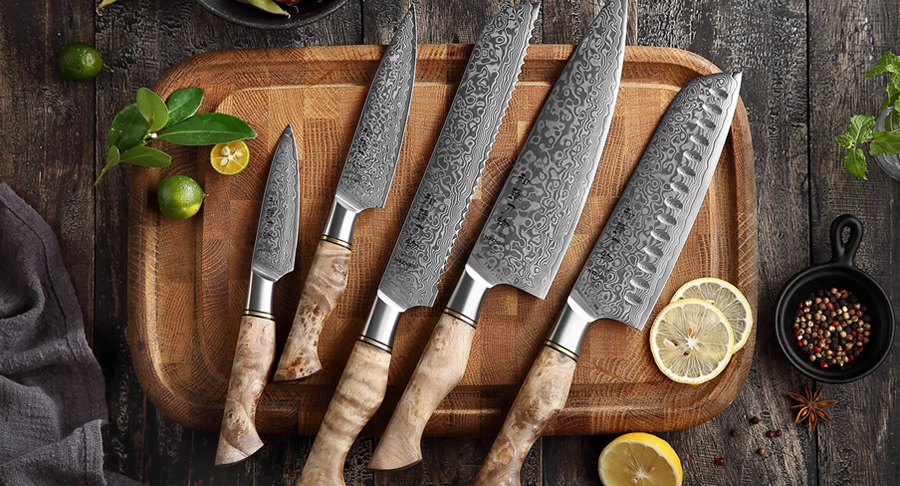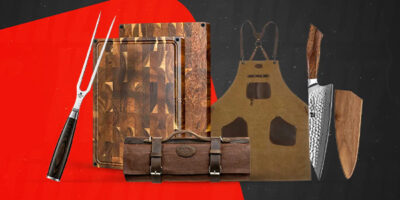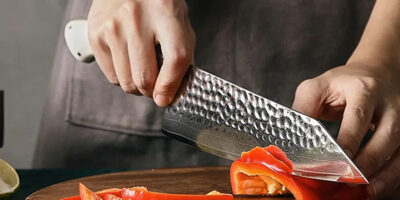
What are the 7 types of kitchen knives?
When it comes to cooking, having the right tools in your kitchen can make all the difference. Knives are among the most essential tools, and understanding the various types can significantly enhance your culinary experience. At eliteprocutlery, we believe that knowledge is power, especially in the kitchen, so let’s dive into the seven types of kitchen knives every home chef should consider having at their disposal.
Chef’s Knife
The chef’s knife is often regarded as the most versatile knife in the kitchen. Typically measuring between 6 and 12 inches in length, it features a broad, tapered blade that allows for a rocking motion while cutting. This makes it perfect for chopping, dicing, and mincing a variety of ingredients, from vegetables to meats. A high-quality chef’s knife becomes an extension of the chef’s hand, allowing for precision and ease in slicing through ingredients.
Paring Knife
The paring knife is a small, versatile knife, usually 3 to 5 inches long, designed for intricate tasks. It’s excellent for peeling fruit, deveining shrimp, and making precise cuts in delicate foods. Its size and maneuverability make it ideal for tasks that require finer control, and it’s particularly useful for preparing garnishes or handling small ingredients.
Serrated Knife
If you often find yourself slicing through crusty bread or delicate tomatoes, a serrated knife is indispensable. The saw-like edge of this knife grips the surface of the food, allowing for clean cuts without crushing. Generally around 8 to 10 inches long, it can also serve a variety of other purposes, such as slicing cakes and pastries. The serrated blade is designed to make slicing easier, especially for foods with tough exteriors and soft interiors.
Utility Knife
As the name suggests, the utility knife is a flexible tool used for various tasks in the kitchen. Measuring between 4 to 7 inches in length, it fills the gap between the chef’s knife and the paring knife. This knife is perfect for slicing larger fruits and vegetables, as well as for general tasks that may require a bit more precision than a chef’s knife can offer. It’s great for making sandwiches, slicing cheese, and other food prep tasks.
Boning Knife
For those who enjoy meat preparation, a boning knife is essential. It typically features a thin, flexible blade, making it ideal for removing bones from poultry, fish, and other meats. The length can vary, but it usually measures around 5 to 7 inches. The sharp, narrow blade allows for precision work in separating meat from bones without wasting any of the valuable cuts of meat.
Cleaver
The cleaver is a hefty knife designed for heavy-duty tasks. With its thick, broad blade, it excels at chopping through bone and dense materials. While it can be used for slicing, its primary function is to cleave through tough ingredients. Cleavers often have a weight that provides leverage for chopping while minimizing effort. They’re invaluable for butchering and can also be used for chopping vegetables.
Santoku Knife
Originating from Japan, the Santoku knife has gained popularity globally for its versatility. Its name translates to “three virtues,” which refers to its ability to slice, dice, and chop. Typically around 5 to 7 inches long, it features a flat edge and a Granton edge (indented grooves) that prevent food from sticking to the blade. The Santoku knife is ideal for those who want a multipurpose tool that handles a variety of tasks with ease.
In conclusion, having the right kitchen knives is critical for efficient and enjoyable cooking. Each knife serves a specific purpose, and understanding their differences will help you choose the right one for the task at hand. At Eliteprocutlery, we specialize in providing high-quality kitchen tools and resources to enhance your culinary adventures. Whether you’re a novice cook or a seasoned chef, investing in a diverse set of knives will elevate your cooking experience, making meal preparation a breeze. So, equip yourself with these essential knives and unleash your inner chef.






